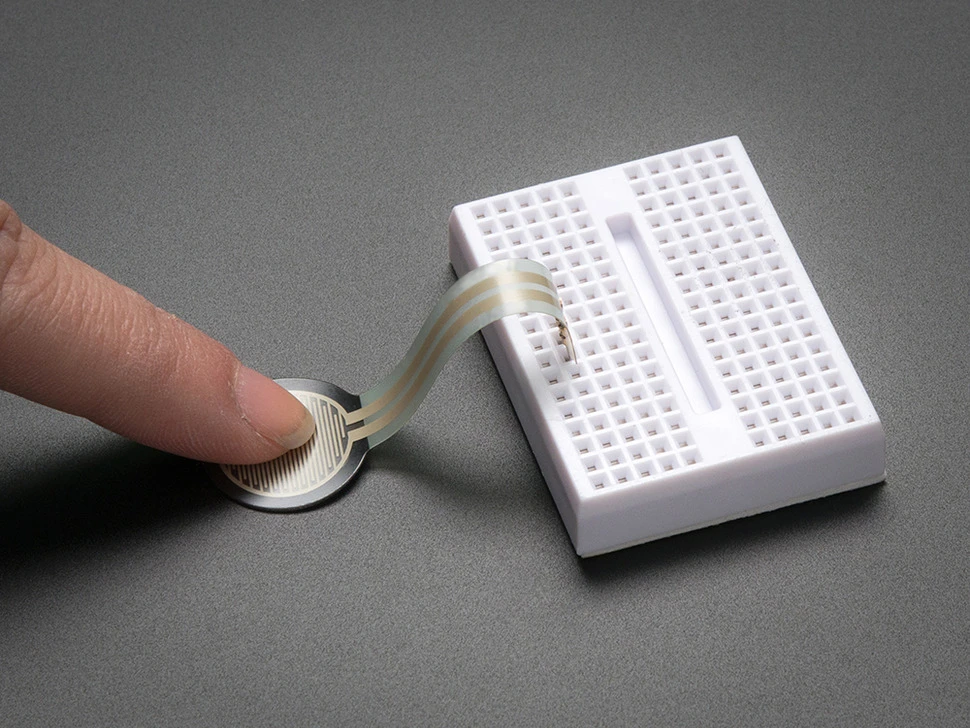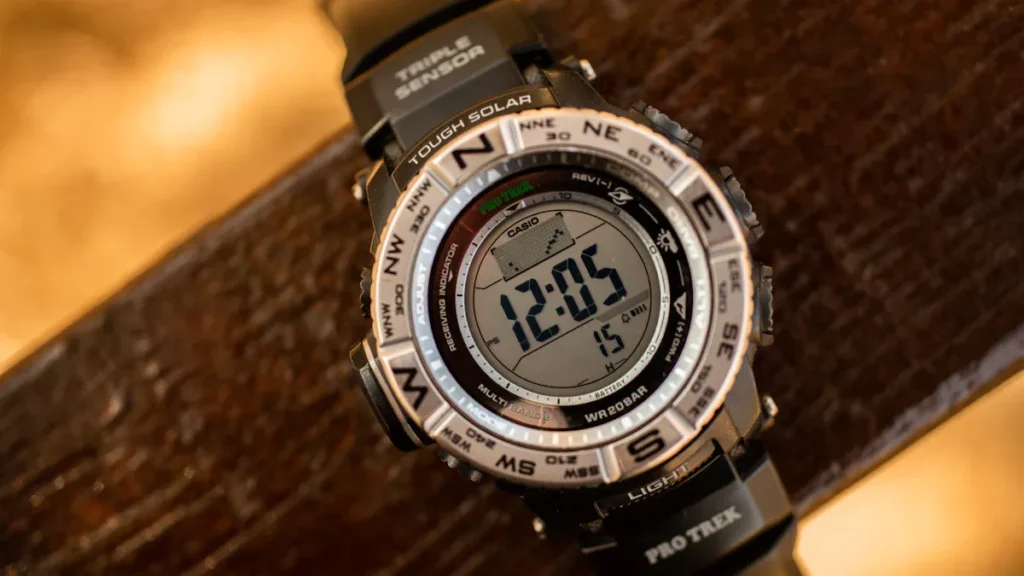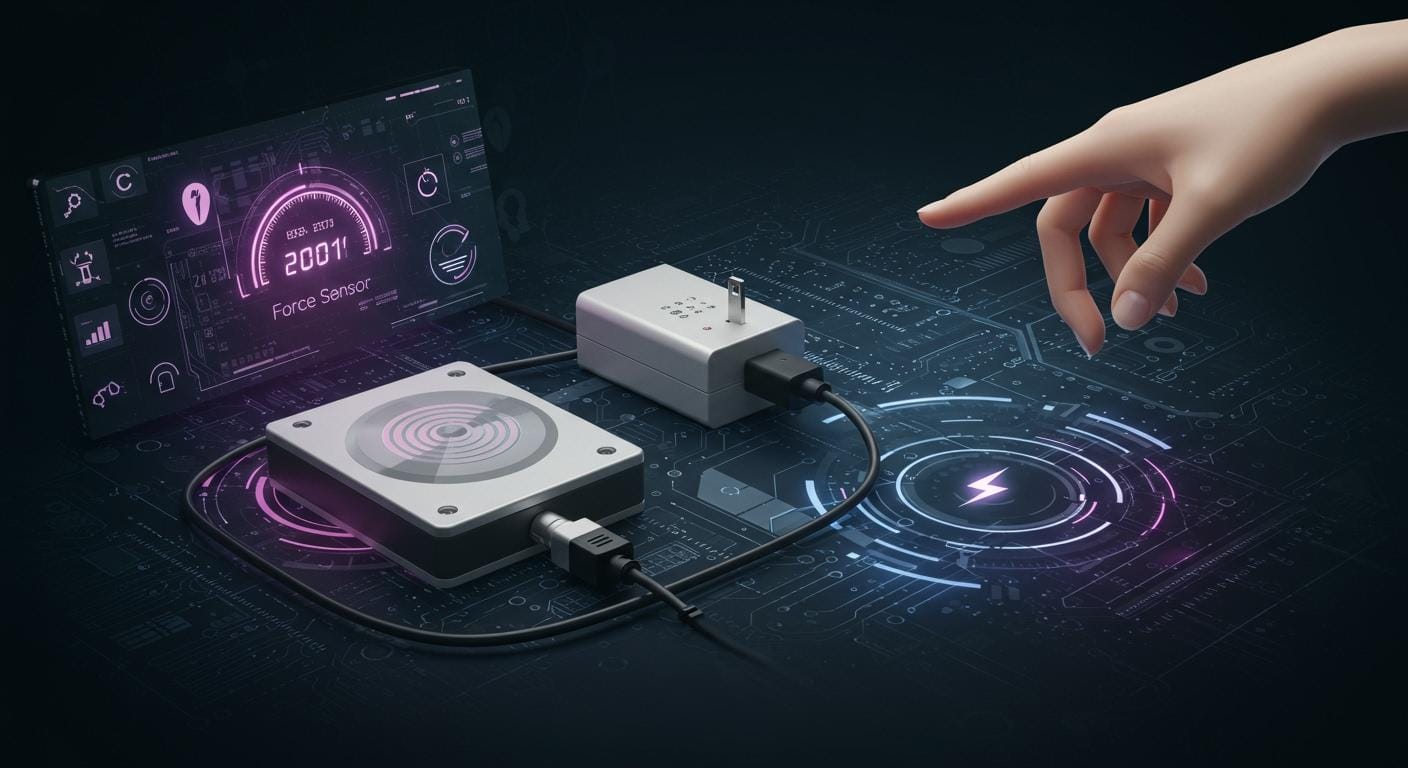Call us: +86-137-2353-4866
Force sensors sometimes need external power, but sometimes they do not. This depends on the type of force-sensing technology used. It also depends on how the sensor will be used. Knowing what power a sensor needs helps people pick the right one. For example, the sensor’s voltage must match the system’s voltage. This keeps things working well and stops damage. The table below shows important things to think about when picking a sensor for factories:
| Criteria | Description |
|---|---|
| Compatibility | Makes sure the sensor’s voltage matches the system’s power without extra parts. |
| Energy consumption | Helps meet energy goals so batteries do not run out or overload. |
| Lifetime | Sensors that use less power last longer in battery systems. |
| Electrical noise sensitivity | A steady power supply may be needed for the sensor to work right. |
Table of Contents
Key Takeaways
- Some force sensors need outside power, but some do not. Pick the right one for your job and sensor type.
- Strain gauge sensors need steady outside power to work well. Make sure the voltage is right for the sensor.
- Piezoelectric sensors can make their own power or need outside power. Look for amplifiers that might need power too.
- Passive mechanical sensors, like spring scales, do not need power. They work well in far away or low-power places.
- Signal conditioning is very important for many sensors. It makes signals stronger and easier to read.
- Powered sensors need regular care. Clean them and check wires to keep them working well.
- Think about where you will use the sensor. Safety features matter in dangerous places.
- Always check the power needs before you set up the sensor. Good planning stops damage and keeps things working.
Why Some Force Sensors Need Power
Operating Principles
Force sensors work in different ways to measure force. The way a sensor works decides if it needs outside power. Strain gauge sensors change resistance when you push on them. Piezoresistive sensors use special materials that change resistance under pressure. They often use silicon to be more sensitive. Capacitive sensors check how much the plates move when force is used. Piezoelectric sensors make electricity when they are squeezed or pressed. Each sensor type needs power in its own way.
- Piezoelectric sensors need a charge amplifier because their signal is weak.
- Capacitive load cells do not use much power, so they are good for batteries.
- Force-sensing resistors change resistance with force, which changes how much power they need.
Note: How a sensor works affects if it needs power and what electronics it uses to measure force.
Signal Conditioning
Many force sensors need help to give clear signals. This help is called signal conditioning. It means making the signal stronger, cleaner, and easier to read. For example, piezoelectric sensors make a small charge that must be made bigger. Strain gauge sensors need a steady voltage for their Wheatstone bridge. If you do not use signal conditioning, the sensor’s signal may be too weak or noisy.
Some sensors, like force sensing resistors, piezoelectric sensors, and capacitive sensors, need outside power. They need this power for extra electronics and for calibration. These electronics help the sensor stay accurate, even if the temperature or humidity changes. Good calibration helps the sensor give the same results every time.
Active Elements
Some force sensors have electronic parts inside them. These parts, like amplifiers, need outside power to work. For example, some piezoelectric sensors have amplifiers inside. These amplifiers make the signal stronger and easier to use. But the amplifier will not work without power.
The table below shows new ways to use less power in sensors:
| Sensor Type | Characteristics | Power Consumption |
|---|---|---|
| Force Sensing Resistors | Piezoresistive, thin, bendy, cheap, used in many things | Low |
| Capacitive Sensors | Use little power, good for battery devices | Low |
| Piezoelectric Sensors | Can make their own power, use energy well | Self-powered |
| Triboelectric Sensors | Can make their own power, use energy well | Self-powered |
Some rules say SMD load cells use thin film technology. This gives them higher bridge resistance and uses less power than other types. SMD sensors usually have bridge resistance from 1,000 to 10,000 Ohms. Other sensors may use silicon or bonded strain gauges with resistance between 350 and 1,000 Ohms.
Strain Gauge Force Sensors

How They Work
Strain gauge force sensors are important in many jobs. They use a simple idea to measure force. When you push or pull on something, it stretches or gets squished. A strain gauge is a thin piece of metal foil stuck to the material. When the material bends or stretches, the strain gauge changes shape too. This makes the resistance of the foil go up or down.
- Strain gauges work because their resistance changes when stretched.
- If you push on a material with a strain gauge, it bends a little.
- The strain gauge can sense this bending by checking resistance.
- This helps figure out how much force is used.
- Strain gauge sensors turn force into an electrical signal.
- The signal gets bigger or smaller depending on the force.
- Strain gauge load cells are used a lot in factories.
- They have metal parts with strain gauges that change shape and resistance when pushed.
The sensor turns force into an electrical signal. The signal changes as the force changes. Factories and labs like these sensors because they are accurate and work well.
Power Requirements
Strain gauge force sensors need outside power to work. The sensor gives a very small voltage, just a few millivolts for each volt you give it. Because the signal is so small, the sensor needs a steady and exact voltage. If the power is not steady, the readings can be wrong or noisy.
A good voltage keeps the sensor’s output steady and correct. If the voltage changes, the sensor might give wrong numbers. That is why engineers use good power supplies with these sensors.
SOUSHINE makes strain gauge sensors for careful jobs. These sensors need a steady voltage to work right. The steady power helps the sensor give correct results, even in tough places.
Tip: Always check what voltage the sensor needs before you set it up. Using the right power keeps the sensor working well and helps it last longer.
Strain gauge force sensors are still used in many places. Needing outside power is important to remember when you install or use them.
Piezoelectric Force Sensors
Piezoelectric force sensors are special because they can work with or without outside power. Their design lets them turn force into electricity right away. This makes them useful in many jobs, especially when quick and careful measurements are needed.
Self-Generating Sensors
Some piezoelectric force sensors do not need outside power. When you push on these sensors, they make their own electric charge. This means they can work in places where it is hard to get power.
- These sensors react fast to force changes.
- They can sense even small forces very well.
- Their own signals make them easy to use in many systems.
The table below shows how self-generating and powered piezoelectric sensors are different:
| Type of Sensor | Power Requirement |
|---|---|
| Self-generating piezoelectric | Makes electric charge when force is used |
| Requires external power | Needs steady current to work |
Self-generating piezoelectric sensors use movement to watch changes in angle and speed right away. They do not need any outside voltage. When the sensor bends, the dipole inside moves. This lowers the electric field and lets out surface charges. The sensor then makes a piezoelectric voltage, which can even power small capacitor devices.
Note: Self-generating piezoelectric sensors help save power and make system design easier.
Sensors With Internal Amplifiers
Some piezoelectric force sensors have amplifiers inside. These amplifiers make the signal stronger and easier to read. But the amplifier needs outside power to work.
The SOUSHINE Series 208 Quartz Force Sensor is a good example. This sensor uses quartz to measure fast forces like shaking, hitting, or squeezing. It has a charge-collecting part between two quartz pieces. When force pushes on the sensor, it makes a voltage with one polarity. The case gets the opposite polarity, which helps make it more correct.
The Series 208 is special because it has a MOSFET amplifier inside. This amplifier gives a strong voltage signal, so it is easy to connect to other tools. The amplifier needs outside power to work. Without this power, the sensor cannot send a clear, strong signal.
Key features of the SOUSHINE Series 208 Quartz Force Sensor:
- Measures fast forces very well.
- Handles quick force changes, like hits or shakes.
- Has an amplifier inside for better signals.
- Needs outside power for the amplifier to work.
Tip: When picking piezoelectric force sensors, always check if there is an amplifier inside. If there is, you must plan for outside power when setting it up.
Piezoelectric force sensors can be used in many ways. Some work with no power at all. Others, like the SOUSHINE Series 208, need outside power for their special parts.
Force Sensors Without External Power

Passive Mechanical Sensors
Passive mechanical sensors are important in many jobs. These devices do not need outside power to work. They use simple mechanical ideas to measure force. Two common types are spring scales and some load cells.
Spring Scales
Spring scales have a coiled spring to measure force. When you pull on the hook, the spring stretches. The scale shows how much force by how far the spring moves. This tool does not need batteries or electricity. People use spring scales in schools, markets, and outside. The design is simple, so they are easy to use and trust. Spring scales work well in places with no power.
Load Cells
Some load cells can work without outside power. These devices use changes in shape to show force. For example, hydraulic load cells use fluid pressure to measure force. When weight pushes down, the pressure inside goes up. A gauge shows the force amount. These sensors do not need wires or batteries. They are used for big jobs, like weighing trucks or large boxes.
Note: Passive mechanical sensors are good for places with little or no power.
Limitations
Passive sensors have some good points, but also some problems. People should think about these before using them for important jobs.
- Changes in temperature, humidity, or dust can make them less accurate.
- They cannot give digital signals or connect to computers easily.
- They only measure force in a certain range.
- Piezoelectric sensors can lose accuracy over time.
- Triboelectric sensors may not work well if the environment changes.
- Magnet-based flexible pressure sensors can be affected by the Earth’s magnetic field, which makes their output low and their range small.
Even with these problems, passive force sensors are still useful. They work without outside power and can make a voltage when force is used. People use them in health checks, medical tools, wearable gadgets, wireless sensors, and rescue work outside. Because they do not need power, they are great for faraway or emergency places.
Tip: Always pick the right sensor for the job. Think about where it will be used and how accurate it needs to be before choosing a passive sensor.
Practical Considerations
Installation
Power needs are important when setting up sensors. If a sensor needs outside voltage, the installer must plan wiring carefully. The installer checks if the voltage matches what the sensor needs. If the voltage is wrong, the sensor might break or not work. Sometimes, special cables or connectors are needed to keep voltage steady and stop electrical noise.
Dangerous places need extra safety steps. Some sensors use safe designs to stop sparks. Others have strong cases or use gas systems to keep flammable gases away. These safety steps protect both the equipment and people nearby.
Tip: Always look at the voltage rating before you install sensors. This helps you avoid mistakes and keeps everything safe.
Maintenance
Sensors that need outside voltage must be checked often. Maintenance teams follow a plan to find problems early and keep readings correct. Cleaning the sensor and connectors stops dirt from messing up the voltage signal. Teams also look for scratches, loose connectors, and mounting problems.
The table below lists main maintenance steps for sensors needing outside voltage:
| Maintenance Consideration | Description |
|---|---|
| Regular Checks | Stops early damage and keeps readings right. |
| Cleaning Procedures | Needed to keep sensors working well for a long time. |
| Inspection for Physical Damage | Daily checks for scratches, connector strength, and mounting points. |
| Recalibration | Needed to keep sensors accurate over time. |
| Software Updates | Helps sensors work better and stay up to date. |
Recalibration is needed because voltage can change over time. It helps the sensor stay accurate. Software updates help sensors work with new systems and keep voltage readings correct.
Application Suitability
Picking the right sensor depends on the job and power available. Some jobs need sensors that work without outside voltage, like battery-powered or remote systems. Other jobs, like factory work, need sensors with steady voltage for good accuracy and quick response.
Safety is important in places with flammable gases or dust. Safe sensors use low voltage and energy to stop sparks. Strong cases keep fires from spreading. Gas systems keep dangerous stuff away from electrical parts. These features make sensors safer in risky places.
Note: No fire or explosion has ever happened because of a failed safe sensor, showing they are very safe.
When choosing a sensor, think about voltage supply, the place it will be used, and how much care it needs. For more help, SOUSHINE gives expert advice to help you pick the best sensor for your needs.
Some force sensors need outside power, but some do not. Each kind works best for certain jobs. Engineers must pick the right sensor for each job. They should always check what power the sensor needs first. Planning ahead helps stop problems and keeps things working well. Picking the right sensor makes sure you get good and correct results.
FAQ
What types of force sensors require external power?
Most strain gauge sensors need outside power. Piezoelectric sensors with amplifiers also need it. These sensors use electronics to help read signals and stay accurate.
Can force sensors work without batteries or electricity?
Spring scales do not need batteries or electricity. Some hydraulic load cells work without power too. They use simple parts or fluids to measure force.
Why do some piezoelectric sensors need external power?
Piezoelectric sensors with amplifiers inside need outside power. For example, the SOUSHINE Series 208 has an amplifier. The amplifier makes the signal stronger and easier to use.
How does power supply affect sensor accuracy?
A steady power supply keeps sensor readings correct. If the voltage changes, the sensor can give wrong or noisy numbers. This is very important for strain gauge sensors.
Are force sensors safe to use in hazardous environments?
Manufacturers make sensors with strong cases and safe voltage. These features help stop sparks and keep users safe. They also protect the equipment from harm.
What maintenance do powered force sensors need?
Technicians check powered sensors often. They clean them and recalibrate when needed. They also look at connectors and update software to keep sensors working well.
How should users choose between powered and passive force sensors?
Users think about where and how the sensor will be used. Powered sensors are good for jobs that need high accuracy or fast results. Passive sensors are better for places with little power or far away.
Does SOUSHINE offer support for sensor selection?
SOUSHINE gives expert help to pick the right sensor. Their team helps match the sensor and power needs to each job.


